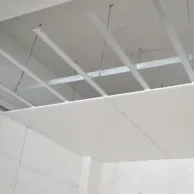- Afrikaans
- Albanian
- Amharic
- Arabic
- Armenian
- Azerbaijani
- Basque
- Belarusian
- Bengali
- Bosnian
- Bulgarian
- Catalan
- Cebuano
- Corsican
- Croatian
- Czech
- Danish
- Dutch
- English
- Esperanto
- Estonian
- French
- German
- Greek
- Hindi
- Indonesian
- irish
- Italian
- Japanese
- Korean
- Lao
- Malay
- Myanmar
- Norwegian
- Norwegian
- Polish
- Portuguese
- Romanian
- Russian
- Serbian
- Spanish
- Swedish
- Thai
- Turkish
- Ukrainian
- Uzbek
- Vietnamese
Nov . 08, 2024 11:37 Back to list
Installation Guide for Suspended Ceiling Tile Grids in Commercial Spaces
Understanding Suspended Ceiling Tile Grid Key Features and Benefits
Suspended ceiling tile grids play a vital role in modern architectural design and construction. They are not merely a structural requirement; rather, they provide a multitude of aesthetic and functional benefits for both residential and commercial spaces. This article delves into the concept of suspended ceiling tile grids, exploring their key features, installation process, design options, and benefits.
What is a Suspended Ceiling Tile Grid?
A suspended ceiling, also known as a drop ceiling, is a secondary ceiling that hangs below the main structural ceiling. It consists of a grid system that holds lightweight tiles, creating a space between the two ceilings. This gap accommodates essential building systems such as HVAC ducts, electrical wiring, and plumbing while allowing for easy access for maintenance.
The grid is typically made of metal and comes in several sizes and configurations. Standard grid systems consist of main runners that run the length of the room and cross tees that connect to create a grid pattern. The ceiling tiles, which are installed within this framework, can be made from various materials including mineral fiber, fiberglass, and metal, each offering distinct advantages in terms of aesthetics, acoustics, and durability.
Installation Process
Installing a suspended ceiling tile grid is a straightforward process, often completed by contractors or DIY enthusiasts. The steps generally include
1. Planning and Measurement Accurate measurements of the space are essential to determine the amount of grid material and tiles required. It also helps in designing the layout, particularly for lighting fixtures or air vents.
2. Hanging the Main Runners The first step in the actual installation involves securing the main runners to the ceiling. These runners are typically installed using wire hangers that are anchored to the existing ceiling.
3. Adding Cross Tees Once the main runners are in place, cross tees are installed to create a grid. The grid is designed to support the weight of the ceiling tiles evenly.
4. Installing Ceiling Tiles Finally, the ceiling tiles are dropped into place within the grid. This step allows for a flexible design, with options to customize the look based on the desired aesthetic.
Design Options
suspended ceiling tile grid

Suspended ceiling tile grids can be customized in several ways to meet both functional needs and design preferences
. Tiles can come in various textures, colors, and patterns, allowing for aesthetically pleasing environments.1. Acoustic Tiles These tiles are designed to enhance sound quality, making them ideal for spaces such as offices, schools, and theaters where noise control is crucial.
2. Decorative Tiles For more aesthetically-focused applications, decorative options are available in various styles and finishes, ranging from modern minimalist designs to intricate textures that can serve as focal points in a room.
3. Functional Variants Some tiles offer additional benefits, such as fire resistance or moisture resistance, making them suitable for areas like kitchens or bathrooms where humidity is prevalent.
Benefits of Suspended Ceiling Tile Grids
The advantages of installing a suspended ceiling tile grid are numerous
- Easier Access to Infrastructure The space created between the original ceiling and the suspended ceiling allows for easier access to systems such as electrical wiring, which can be crucial for maintenance and repairs.
- Improved Aesthetics The grid and tile system allows for a clean and uniform look, enhancing the overall appearance of the space.
- Acoustic Control Many tiles are designed to absorb sound, helping to create quieter and more comfortable environments.
- Energy Efficiency By incorporating insulation materials, suspended ceilings can contribute to thermal performance, potentially reducing energy costs.
- Alteration Flexibility The grid system allows for easy modifications, making it simple to replace or rearrange tiles as needs change over time.
In conclusion, suspended ceiling tile grids present a perfect blend of functionality, versatility, and design utility. They cater to modern construction needs while providing aesthetic enhancements that make them an integral part of contemporary architecture. Whether you are renovating an office, designing a new commercial space, or enhancing a residential home, considering a suspended ceiling tile grid can lead to significant benefits and a stylish finish.
-
Transform Interiors with PVC Gypsum Ceiling: A Stylish, Durable, and Moisture-Resistant SolutionNewsMay.19,2025
-
The Smart Interior Upgrade: Discover the Durability and Versatility of Gypsum Ceiling Access Panel SolutionsNewsMay.19,2025
-
The Smart Choice for Interior Design: Discover the Value of PVC Gypsum Ceiling SolutionsNewsMay.19,2025
-
Mineral Fiber Ceiling Tiles: The Smart Blend of Performance and AestheticsNewsMay.19,2025
-
Mineral Fiber Ceiling Tiles: The Superior Choice Over Gypsum for Sound and Fire SafetyNewsMay.19,2025
-
Mineral Fiber Ceiling Tiles: Eco-Friendly Strength and Style for Every CeilingNewsMay.19,2025







